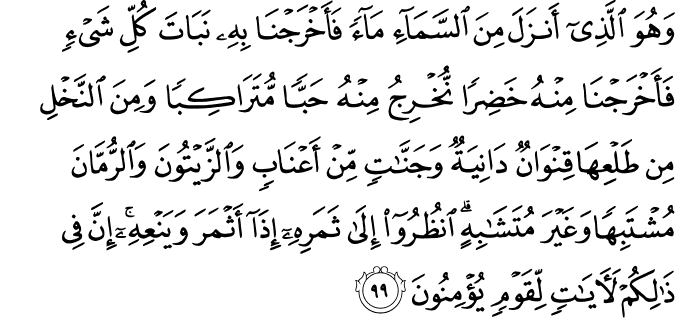

And it is He who sends down rain from the sky, and We produce thereby the growth of all things. We produce from it greenery from which We produce grains arranged in layers. And from the palm trees - of its emerging fruit are clusters hanging low. And [We produce] gardens of grapevines and olives and pomegranates, similar yet varied. Look at [each of] its fruit when it yields and [at] its ripening. Indeed in that are signs for a people who believe. (Quran, 6:99)
We may be in the depth of winter across Canada, but to many gardeners, this is the time of year to plan for the upcoming season. Local community groups are also preparing for the advent of spring and are putting final touches on proposals for gardening projects on open roofs, parking lots and empty fields within their neighborhoods.
Community gardens have begun to flourish in recent years, especially within urban centres. While collective gardening is not a new phenomenon, it has taken root and evolved beyond local parks, schools and recreation centres to include underutilized regions of the city such as vacant lots and hydro corridors.
The emerging movement towards growing and purchasing local, organic produce has generated interest in community gardens, especially in cities where residents lack access to arable land. There have also been several health scares over the last few years over contaminated produce which has fueled the drive for organic products. Aside from the health benefits of eating naturally grown produce, the movement as a whole has created several positive impacts in the communities they serve, including revitalizing neighborhoods and fostering a new generation to make more conscious food choices.
Places of worship have also been looking at developing community gardens to serve both their congregations and the general public. Generally their facilities are situated on large open lots that are able to be easily converted into small-scale gardens or into larger agricultural plots. The congregations they serve also possess a diverse range of skills that are able to build, create and maintain an ongoing garden.
After the garden is established, it becomes a beacon for the community by providing educational and recreational opportunities for children and seniors, raises awareness about how our food is grown and physically connects the spiritual teachings with the natural word. The produce that is cultivated can be donated as a fresh alternative to local food banks or used in soup kitchens to feed those less fortunate.
While the initial push has mainly been from churches, community gardens are now beginning to become established within mosques as well.
The Winnipeg Central Mosque teamed up with the Daniel McIntyre / St. Matthews Community Association to start an urban community garden in 2011. The project was constructed within the parking lot and now contains eleven raised beds and three decorative planter beds. The goal of the program is to “encourage environmentalism and to create a safe and welcoming space where families and individuals can enjoy community connectivity through organic urban gardening.”
The Islamic Society of Kingston also launched their own community garden initiative called Gardens of Mercy. The mandate of the project was to encourage “a more efficient and sustainable way of providing healthy food to those in need.” There were several goals of the program which include:
- Helping our hungry neighbors in Kingston by providing them with fresh, local produce;
- Learning about gardening, which can help us in starting a garden at home;
- Appreciation of nature, the environment and Allah's blessings upon us;
- Opportunity to welcome other faith and cultural groups to take part in this project and work together for a good cause.
- Gaining the pleasure and mercy of Allah by being merciful to others.
While there are many benefits to community gardening, there is also a lot of preparation that goes into developing and planning before the first shovel hits the ground. This includes forming a dedicated team to take ownership of the garden, developing and designing the site, taking an inventory of the materials needed, securing the necessary funding and ensuring continued support for the garden in future years.
There are many resources available for those looking at creating a community garden at their mosque. Recently, the Noor Cultural Centre held a workshop entitled A Beginners Guide to Urban Farming, presented by Young Urban Farmers. Their organizations website provides a wealth of information on edible gardens, plants ideal for urban environments, soil management and pest control.
The Toronto Region and Conservation Authority also held a workshop this past fall entitled Creating a Community Garden at your Place of Worship. There they presented resources from the David Suzuki Foundation which includes information on planting native species and attracting pollinators to your garden. They also went through a workshop module from Food Share, which guides you through the steps in recruiting and securing funding for the development of a community garden.
Whether your mosque plans to develop a small rooftop garden with a couple of planters or a large area with several dozen plots, there are key elements that should be considered in the planning phases. The Halifax Garden Network effectively summarizes these steps which include:
1. Organize a meeting of interested people 2. Form a planning committee 3. Identify all your resources 4. Find Financial Support 5. Choose a site 6. Design the garden 7. Prepare and develop the site 8. Make the Garden Accessible 9. Create membership guidelines and put them in writing 10. Keep in touch with each other
Community gardening is a rich and rewarding experience that allows you to share the joys of the outdoors while meditating over the signs of Allah’s creation. The initial investment multiplies in the following years and creates a lasting legacy that can be enjoyed by all in the community. For more information, please visit the following resources below:
Photo Credit from: Torontoist

